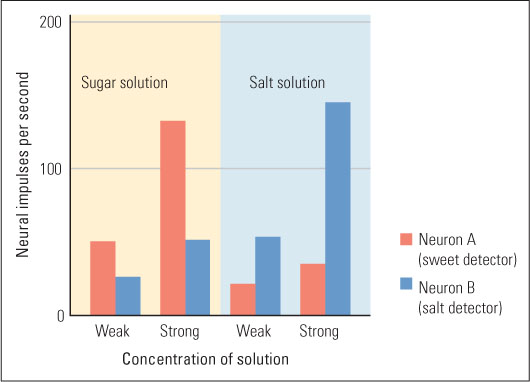
Figure 7.2 Quantitative and qualitative coding of taste Shown here are the rates of action potentials in two different taste sensory neurons when a weak or strong solution of sugar or salt is placed on the tongue. Each neuron responds at a faster rate to a strong solution of a given substance than to a weak one (quantitative coding); but neuron A always responds at a faster rate than neuron B when the stimulus is sugar, and the reverse is true when the stimulus is salt (qualitative coding). This illustrates the general principle that sensory quantity is coded in the overall rate of action potentials in sensory neurons and sensory quality is coded in the ratio of activity across different sets of neurons. Data are hypothetical, but are based on such findings as those of Nowlis & Frank, 1977.